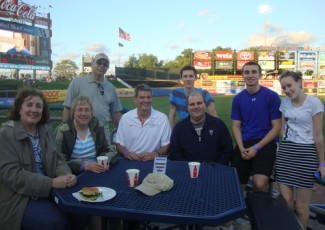Fundraising Lessons From the Best
By Sonya Stinson
February 2, 2016
The secrets to creating lasting relationships and getting the funding colleges need.
In the 15 years that he’s been in charge of fundraising at Northeast Mississippi Community College, in Booneville, Mississippi, Patrick Eaton has helped bring in $17 million in donations for the school. That longtime record, along with some of his most recent successes, earned Eaton the Council for Resource Development’s 2015 Campus Impact Award for being the nation’s best community college fundraiser.
Before his appointment as vice president of Institutional Advancement and as executive director of the Development Foundation and Alumni Association, Eaton was executive director of the Booneville Area Chamber of Commerce, where, he says, raising money was a major, if unofficial, part of the job.
Within a year of Eaton’s arrival at Northeast Mississippi, then president Charles W. Chance asked him to head up the college’s first major gifts campaign. Drawing on his earlier fundraising experience, Eaton set a plan that reflected the views of students, faculty staff and the community about the college’s most pressing development needs. That first campaign met its goal of raising $5.5 million for the endowment, several building projects and some technical equipment, Eaton says.
“That’s kind of how we stepped out here at the community college level, of being a destination for dollars other than just $100 memorials,” he says.
In fact, the school was able to pull in one million-dollar donation, along with a $250,000 gift and several worth $100,000 each. Today, Northeast Mississippi Community College receives about $1 million annually in donations. Eaton shared a few of the secrets to that success.
Building relationships is the most important part of fundraising. Those relationships establish trust and help donors feel assured that their money will reach the intended target and make a difference.
“It takes a little time,” Eaton says. “They try a little something with you and see that it goes well, and then they do a little bit more.”
Good data is essential to matching donors with the right projects. When Northeast Mississippi needed to raise money for a new football field house, Eaton and his staff were able to tap a list of football boosters. Other fundraising campaigns benefitted from similar targeting, because the school had built a database of people who had expressed interest, either through personal conversations or responses to direct mailings, in supporting specific causes.
“It doesn’t just happen in one year,” Eaton says. “It may take you five or six years to build the base.”
No fundraising campaign runs exactly as planned. “Anytime you start a fundraiser, there’s always going to be things that you’re going to change along the way,” Eaton says. “A lot of times, when you adjust, it makes you get smarter.”
When donors say they’ve committed the bulk of their philanthropic budgets elsewhere, Eaton often suggests they donate a smaller amount to his current project and spread it out over a longer period.
A note of thanks is the best marketing message for your next fundraiser. Eaton has had many donors continue to give after completing five-year pledges when they received recognition and an accounting of where their money went. A token of appreciation as simple as a T-shirt with the community college logo goes a long way, he says.
“In community college, we don’t have Division I football,” Eaton says. “We don’t have bowl games to invite [donors] to. We don’t have a plane that we can fly them on. We can’t host these spectacular $100,000 parties. What we can do, in my particular job, is take the time to write them a thank-you note and tell them how much we appreciate them.”







